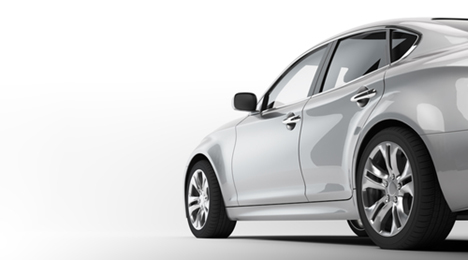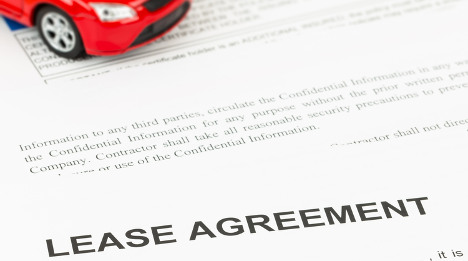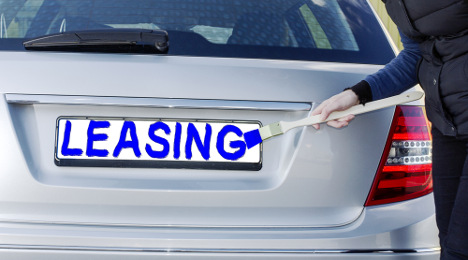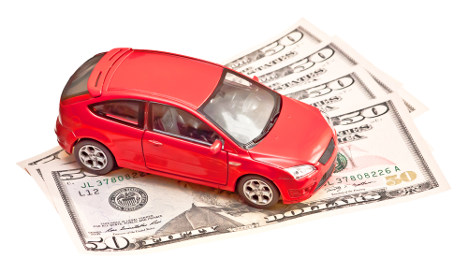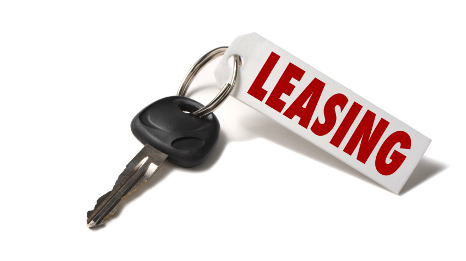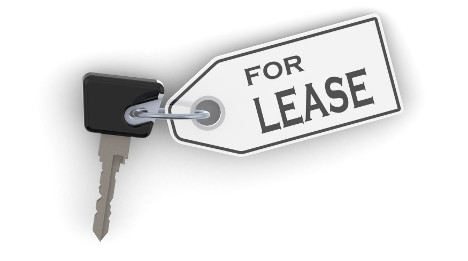Experian Automotive is predicting there will have been 1.8 million off-lease vehicles hitting the market between April and the end of December.
But what will those consumers driving those leased cars back to dealer lots do next?
Perhaps not surprisingly, most will go new and most will lease again.
In fact, among consumers with leases ending in the next 90 to 120 days, nearly four in five (roughly 79 percent) will go new with their next car, while the remaining 21 percent plan to go used. That’s according to an Infocore analysis of multiple “audience groups” (i.e. data sources that provide information about auto shoppers).
The same data set on lease-end intention that Infocore (www.infocore.com) shared with Auto Remarketing said that an estimated 58 percent of consumers with leases ending in the next 90-120 days will get another lease, while 42 percent say they will make a purchase.
And just where will these off-lease cars be?
Looking at an Experian Automotive data set on the top metropolitan areas for off-lease units in 2016, you will find a large chunk in the nation’s two biggest metros.
And the Motor City.
Below is a breakdown from Experian on the total estimated market count for the top 10 metros for off-lease vehicles in 2016:
New York: 307,000
Los Angeles: 232,000
Detroit: 157,000
Miami-Fort Lauderdale: 82,000
Philadelphia: 65,000
San Francisco-Oakland-San Jose: 56,000
Cleveland-Akron-Canton: 46,000
Boston-Manchester: 42,000
Chicago: 36,000
West Palm Beach-Fort Pierce, Fla: 33,000
More than 30 percent of new-vehicle retail sales year-to-date have been leases, helping to push numbers for a few automakers, according to Kelley Blue Book senior analyst Alec Gutierrez.
And while the short-term risks are marginal, there’s a bit of a slippery slope when leasing levels are this high, Gutierrez said during a conference call with the media on Wednesday.
“Again, at this stage, we don’t see a tremendous amount of downside risk in the short term, but as we talked about a little bit in last month’s call, as far as what dealers are paying at wholesale auctions where these off-lease vehicles have been returning in greater and greater numbers, we are seeing a 2-percent decline on late-model vehicles purchased at auction,” he said.
“And over time, as additional volume comes back from leasing, you’ll see more downward pressure on used-car values at these wholesale auctions, which puts downward pressure on residuals, which then makes leasing a more costly proposition for the manufacturer as they have to up incentive spend to off-set … potential continued declines in residual values,” Gutierrez said.
Edmunds.com director of industry analysis Jessica Caldwell said via Twitter on Wednesday that May marked the sixth straight month where leases represented 30 percent or more of new-car sales.
Edmunds provided Auto Remarketing a breakdown of the leasing rates in each of those six months, as follows:
- December: 30.1 percent
- January: 32.0 percent
- February: 33.2 percent
- March: 31.9 percent
- April: 31.8 percent
- May: 30.9 percent
According to Experian Automotive, 31.1 percent of all first-quarter new-car sales were leases, an all-time high.
And that’s likely to grow.
Much of that growth is triggered by rising vehicle prices, Experian’s Melinda Zabritski said in a news release accompanying the company’s State of the Automotive Finance Market report.
According to KBB, the average transaction price on a new vehicle in the US was $33,845 in May. This was down 0.3 percent from April but up 3.5 percent year-over-year.
“The continued rise in new vehicle costs have kept many consumers exploring options to keep their monthly payments affordable,” said Zabritski, Experian’s senior director of automotive finance. “As long as vehicle prices continue to rise, we can expect leasing rates to grow along with them.
“However, consumers need to understand the nuances of their lease agreements and make sure that leasing fits their lifestyle,” she said.
As a side note, used-car leasing — a much smaller segment of the market — was up 2.1 percent year-over-year in Q1, Experian said.
Used-vehicle leasing may be having a moment.
According to a recent survey by Swapalease.com, 78.7 percent of drivers would consider leasing a used car or truck, and 74 percent of dealers indicated that used lease offers may help or definitely would help move the influx of leases coming back onto their lots.
A majority of drivers (75 percent) said they would want a monthly payment that is 20 percent to 30 percent lower than the original payment on the same car as a new vehicle. For example, most people said they would expect a BMW 3 Series originally priced at $400 a month to then be priced at $250 or $275 monthly as a 3-year-old lease. Likewise, 44 percent of dealers polled said they would offer a 3-year-old lease at 25 percent to 35 percent off the original monthly payment as new.
Other findings:
—While only 21.2 percent of dealers said they felt warranty issues are important to shoppers considering a used car or truck lease, 95.3 percent of drivers said they would expect a warranty to be offered on such a lease.
— Drivers said their top three choices for domestic cars and trucks as a used lease would be Cadillac Escalade, Cadillac CTS and Jeep Cherokee. Conversely, most dealers said they would want to offer used lease deals on a Buick Regal, Cadillac CTS and Chevrolet Cruze.
— The majority of drivers think more flexibility is needed overall in lease options. 54 percent said they would be interested in extending their lease between six and 12 months at lease end of the original term. Another 72 percent said they would be interested in transferring into a lease that was older than three years. Finally, 37 percent said they would like to work with a dealer who could help them get out of their lease without penalty if it meant they could purchase or lease a new or different vehicle.
—Nearly half (47 percent) of dealers said they would like to make car shopping more like shopping for an iPhone, where consumers get a new smartphone every two years.
Surveys were administered online to more than 2,500 drivers and 250 auto executives at dealerships throughout the U.S.
Two automakers this week announced they had formed partnerships with popular ride-sharing providers.
Toyota Financial Services announced a strategic investment in Uber that will allow Uber drivers to lease their vehicles through Toyota and cover their payments through their rideshare earnings.
The Volkswagen Group, meanwhile, said it has made a $300 million investment Gett (formerly GetTaxi).
The leasing offer is part of a newly announced partnership through which Toyota Motor Corp. and Uber are exploring the expansion of ridesharing in countries where the practice is expanding.
“Ridesharing has huge potential in terms of shaping the future of mobility. Through this collaboration with Uber, we would like to explore new ways of delivering secure, convenient and attractive mobility services to customers,” said Shigeki Tomoyama, senior managing officer of Toyota Motor Corp. and president of the Connected Co., one of Toyota Motor Corp.’s recently created in-house companies.
“We’re excited that Toyota, the largest automobile manufacturer in the world, is making a strategic investment in Uber as part of a broader global partnership. Toyota vehicles are among the most popular cars on the Uber platform worldwide and we look forward to collaborating with Toyota in multiple ways going forward, starting with the expansion of our vehicle financing efforts,” said Emil Michael, chief business officer of Uber.
Toyota and Uber also will explore collaboration in a variety of other areas, such as developing in-car apps that support Uber drivers, sharing knowledge and accelerating their respective research efforts, and establishing a special fleet program to sell Toyota and Lexus vehicles to Uber.
Leasing periods will be flexible and based on driver needs. This initiative builds on Uber’s current Vehicle Solutions program, though which drivers can receive discounts on car purchases from a number of automakers.
The leasing offer from Toyota, in concert with Mirai Creation Investment Limited Partnership, comes on the heels of an Experian Automotive report stating that open leases originated during the first quarter grew by 27.55 percent to an all-time high of $76.9 billion, up from $73.1 billion spotted during the previous year.
Meanwhile, Volkswagen’s partnership with Gett is based on a joint growth strategy to expand on-demand mobility services in Europe.
Innovative, digitally integrated services covering all aspects of mobility promise very strong growth momentum and huge earnings opportunities in the near future. The ride-hailing market represents the greatest market potential in on-demand mobility, while creating the technological platform for developing tomorrow’s mobility business models. The Volkswagen Group’s goal is to generate a substantial share of sales revenue from such new business models by 2025.
“Alongside our pioneering role in the automotive business, we aim to become a world-leading mobility provider by 2025,” says Matthias Müller, chairman of the board of management of Volkswagen Aktiengesellschaft. “Within the framework of our future Strategy 2025, the partnership with Gett marks the first milestone for the Volkswagen Group on the road to providing integrated mobility solutions that spotlight our customers and their mobility needs.”
“The Volkswagen Group and Gett is a great strategic partnership. The pay-per-ride domain is growing rapidly. In that context, Gett provides VW with the technology to expand beyond car ownership to on-demand mobility for consumers and businesses,” said Shahar Waiser, Gett’s founder and CEO.
The news comes just one month after Volkswagen announced it was planning to launch a legally independent company for the development of mobility services. Gett will be a key partner in that venture.
Through the Gett app consumers can book on-demand rides instantly or pre-book rides for later. In addition to transportation, Gett covers innovative delivery and logistics.
Here’s more data showing how much metal is rolling over the curb as leased vehicles nowadays.
Experian Automotive reported on Thursday that open leases originated during the first quarter grew by 27.55 percent to an all-time high of $76.9 billion, up from $60.1 billion spotted during the previous year.
According to the most recent State of the Automotive Finance Market report, that leasing activity propelled the total balance of open automotive loans up 11.1 percent in the first quarter, surpassing the trillion dollar mark for the first time on record. Experian determined loan balances reached $1.005 trillion in Q1 2016, up from $905 billion in Q1 2015.
“Automotive financing certainly has started off the year with a bang, seeing steady growth in balances and loan volumes throughout the first quarter,” said Melinda Zabritski, senior director of automotive finance for Experian.
“With more and more consumers relying on financing, it is important for lenders to keep a close eye on delinquency trends to ensure the market remains healthy,” Zabritski continued. “Likewise, consumers need to continue making their monthly payments on time to keep affordable financing options open and available.”
Findings from the report also show that while there were increases in both 30- and 60-day delinquency rates, the overall percentage of total delinquent loans remains relatively low when compared to pre-recession levels.
In Q1 2016, the percentage of loans and leases considered 30-days delinquent was 2.1 percent, up from 2.02 percent in Q1 2015.
Additionally, the percentage of loans and leases considered 60-days delinquent grew from 0.57 percent to 0.61 percent over the same time period.
Some additional insights from the Q1 2016 report:
—The volume of vehicle loans and leases held by nonprime and subprime consumers increased by 9.5 percent and 10.9 percent, respectively.
—Prime consumer loans and leases increased by 8.9 percent.
—Finance companies and credit unions saw the largest growth in loan and lease market share, growing 25.6 percent and 15.9 percent, respectively.
—Banks continued to hold the top position in automotive loan and lease volume, growing 7.9 percent over the previous year to reach $349 billion in market share.
With so much buzz lately on used lease options, consumers naturally want to know if their monthly payments on a used vehicle will be significantly lower than for a new one.
To give consumers a glimpse into deals that are out there, Swapalease.com recently compared new versus used monthly lease payments on two popular GMC trucks.
The new lease monthly payment is based on current payments, and the used lease monthly payment is based on what the payments would be if leased three years down the road.
The analysis showed that while monthly payments are lower on a used lease, the margin can vary.
The 2016 Yukon 4WD SLE (average MSRP $53,885) runs about $614.57 a month plus taxes for a new lease, and an estimated $424.80 a month for a lease on a 3-year-old vehicle — about 30 percent less.
Meanwhile, the 2016 Sierra Crew Cab 4WD SLE (average MSRP $48,050) runs about $513.61 for a new lease, and an estimated $421.29 for a lease on a 3-year-old vehicle — about 18 percent less.
“There’s plenty of talk in the marketplace about the prospects of used lease deals, which historically haven’t been a large part of lease availability,” Scot Hall, executive vice president of Swapalease.com, said in a news release. “We wanted to provide a snapshot to the industry and to consumers what some average comparison deals might look like as a way to provide education ahead of any possible deals.”
For a complete look at the numbers behind these deals, click here and here.
Federal and state regulators have charged dealers numerous times with deceptive advertising trying to entice consumers. But the National Automobile Dealers Association recently spotted a campaign in which stores have been the target.
NADA indicated some dealers may have received an email with the subject line “Local Expiring Leases.” The association noted the email also reads “From NADA Digital Dealer Marketing.”
“The sender of these emails has no relationship with NADA,” the association said. “NADA has asked the sender to stop these deceptive emails and all other advertising that suggests any connection with NADA.
If dealers still have any questions about advertising or other communications from NADA, officials suggested they contact the appropriate association department.
Beepi announced Wednesday that its used-car leasing program has officially gone live and is now available in each of the company’s 16 markets.
That includes Houston, which Beepi added to its roster this week.
As reported earlier, Beepi is offering the leases through the Ally Pre-owned SmartLease product launched in late March.
“Beepi is all about taking the hassle out of the car-buying experience. We’re trying to make sure that our sellers and buyers have a great experience transacting with their vehicle,” Beepi head of business development Daniel Bilbao told Auto Remarketing earlier this month.
“For us, used-car leases make a lot of sense, because it’s choice. You have the flexibility to decide, ‘Do I want to get rid of my car after three years? Do I want someone else to have to take care of that? Do I want to be getting into a loan for six, seven, eight years?’ That is not hassle-free,” he said, referring to the long-term loan.
Giving more options to a buyer allows him or her to make a financing choice that’s more amenable to his or her lifestyle. For instance, he said, are there big changes, like having kids, on the horizon? Does the customer want to be locked into a long-term loan?
“It goes to the ethos of simplicity and taking hassle away from transactions that Beepi is all about,” Bilbao said.
According to Experian Automotive data shared at the NADA Convention & Expo, the average monthly payment on a new-car loan in the fourth quarter of 2015 was $493. That compares to an average monthly new-car lease payment of $412.
So, would used–car leasing offer a similar pricing advantage?
“Used leasing, in general, can be as competitive as a loan,” Bilbao said, “but when you think about it, all else being equal, if you lease a vehicle, you have the option of staying with the car or you can dispose of it without having to be on the hook for it.
“Although in new, price is a key component to it, in (Beepi's used-car leasing program), we believe it’s going to be quite competitive, but there’s a lot more to a lease than just the fact that you pay less,” he said.
It’s really more about convenience, not having to buy the vehicle outright and having options, Bilbao said.
As far as the logistics, when the lease is up, Beepi will come out to pick up the car and perform a final inspection. The company will then work with Ally on the remarketing process, whether that’s selling it themselves or going through one of Ally’s remarketing channels, Bilbao said.
Payments and residuals are also done through Ally. The lessee also has the option to buy the car when the lease is up.
Swapalease.com reported on Thursday that lease credit approvals are lower again after a hike in February levels.
Site officials indicated lease credit approvals for March finished at 66.7 percent, down from the February mark of 70 percent.
The site suspected that lease credit approvals may be falling back into the trend of late 2015, with lower approval percentages. Monthly lease approvals are up 0.6 percent from a year ago. But Swapalease.com pointed out that in comparison to the previous month, vehicle lease credit approvals have taken a slight dip.
Although consumer confidence is currently exceeding the forecasted percentage for the month, Swapalease.com executive vice president Scot Hall referenced a report from Bloomberg that mentioned the percentage of consumers who said that they would be buying a vehicle also slipped 1.6 percent from last month
Hall acknowledged this trend, mixed with a recent increase in gas prices, could mean a peak for vehicle sales in 2016.
“We think consumer credit remains generally healthy in the broader picture, and we’re more than likely experiencing the normal ups and downs of a healthy market,” Hall said.
“As always, we’ll continue to keep a watchful eye on this latest dip, particularly against recent data that shows interest in motor vehicles may be peaking,” he went on to say.
Creeping up.
Forms of that phrase were used by both Kelley Blue Book and Jonathan Banks of NADA Used Car Guide to describe the current state of new-car incentives.
And one area, in particular, could be an interesting spot for the industry, if not done right: lease incentives.
While a “throwback” vibe is in full vogue within pop culture, the same can’t be said for the auto business, at least in one regard: the lease subvention of the late 1990s is probably worth not repeating.
Overall incentive growth pattern
Measuring it against actual transaction prices, KBB shared a data set with Auto Remarketing indicating that incentive spending as a percentage of ATP has reached 9.0 percent so far this year. Back in 2012, it was at a recent low of 7.9 percent and has climbed every year since.
Automakers certainly haven’t gone even back to the mid- to late-2000s, when ratios were well above 9 percent (i.e. 9.7 percent in 2005 and 2008; 9.4 percent in 2009).
But as KBB noted in a message to Auto Remarketing, the figures are “creeping back up.”
Meanwhile, NADA Used Car Guide shared J.D. Power data showing that incentives — measured as a percentage of MSRP — have climbed from 8.3 percent in 2011 to 9.1 percent for 2015.
Year-to-date, they’re at 9.6 percent, up from 8.7 percent through the same period of last year.
“Incentives, since 2011 essentially, have been creeping up every year, helping drive the strong new-vehicle market that we’ve seen,” Banks said during a press conference here at the NADA Convention & Expo this past weekend.
Regarding the year-to-date measure of incentives-against-MSRP, Banks added: “A lot of analysts say 10 percent is a dangerous number. I don’t know what a dangerous number is, but you can see from the trend that 9.6 is really high. Incentives have reached a point where they’re starting to become something we should think about as far as the health of the industry.
“Are we at a level of incentives that are becoming unhealthy and unsustainable to keep new-vehicle sales going?”
Good question. Particularly, as it pertains to leasing.
Lease spend: ‘The striking one.’ More harm than other incentives, though?
Among all types of incentives, NADA Used Car Guide — this time citing Autodata Corp. — said average spend per unit in 2015 was $2,900.
That’s a figure that has risen in each of the last three years and continues to climb in 2016, having reached $3,000 year-to-date.
“But the striking one is really the $4,900 per unit leased,” Banks said. “(It’s) quite a bit of spending to keep that leasing catalyst going for driving new-vehicle sales.”
So, how risky are leasing incentives compared to other incentive types in terms of impact down the road, though?
“I’ve seen people talk about the modeling, and they say that cash incentives have a one-to-one impact on a used vehicle. But I’ve also see my modeling (where) I can’t really say that a cash incentive have a one-to-one impact on a used vehicle,” Banks said.
He goes on to mention the part about lease incentives he feels better about, citing discussions with captive financers.
“It appears that the major way they’re subvening the lease is a cap-cost reduction. So it’s kind of like a cash incentive,” Banks said. “Now, the reason I’m OK with that versus a residual enhancement is because at least they’re taking the hit now.
“That cap-cost reduction, we should already see that pass through in the used market. That’s why I say it can’t be a one-to-one reduction; otherwise, we’d see huge reductions. But it gets a little bit more difficult, I think, for the customer to determine the relationship between a lease and a used-vehicle price,” he added.
“It’s hard to say, but the rule of thumb was that cash is the worst because it’s very transparent, and that lease has the least impact because it’s a little more difficult to figure out, but I believe you pay the piper one or the other,” Banks went on to say.
Harm of lease subvention
Think about the return rates for vehicles coming back off-lease to the captives, Banks said.
Based on his discussions with captives, he estimates that, currently, between 30 percent and 50 percent hit the auction, with the remainder being remarketed in other channels. For some, it’s even lower.
“If you subvene residuals, and they’re well above market … you can expect that retention rates by the customer or the dealer or upstream to decline, and then more vehicles are going through auction,” Banks said. “OK, what’s the big deal? Well, now you’re kind of flooding the market a little bit in a way that isn’t healthy.
“It’s not a bad thing in that it just makes prices decline,” he continued. “At least if they take the hit now, I think it’s better. The subvented is what we went through back in the late '90s, and that’s when we saw that 12-percent reduction in used-vehicle prices, and we don’t want to do that (again).”

